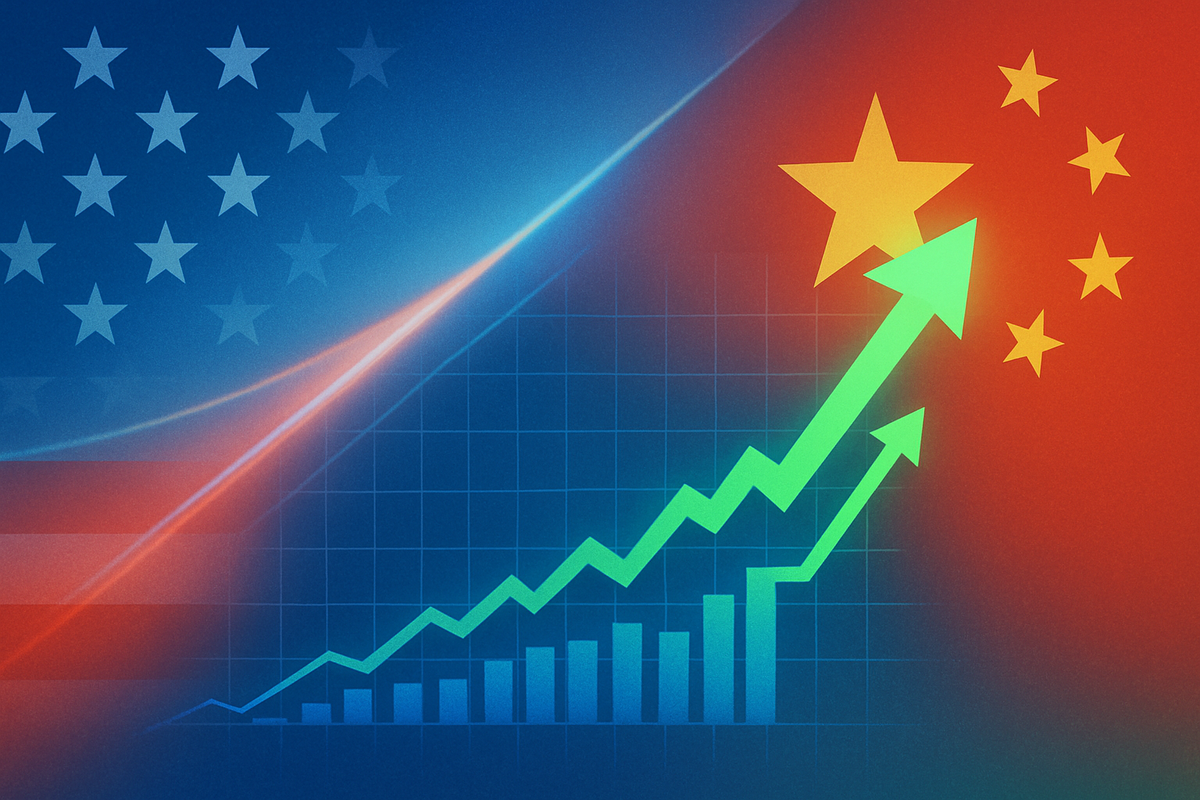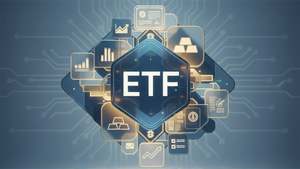
October 12, 2025 – In a significant turn of events during his presidency, President Donald Trump's conciliatory remarks on US-China trade relations repeatedly acted as a potent balm for anxious financial markets, often leading to immediate surges in Dow and S&P 500 futures. These instances, characterized by a softening of trade rhetoric and hints of progress toward de-escalation, consistently underscored the profound sensitivity of global markets to the nuanced dynamics of the world's two largest economies. While these specific events are now historical, their impact serves as a critical precedent for understanding how political rhetoric can instantaneously reshape investor sentiment and market valuations, even as we look at the financial landscape of 2025.
The pattern established during the Trump administration highlights how the prospect of eased trade friction could swiftly reverse negative market trends, offering a glimpse into the ongoing volatility that geopolitical tensions can inject into trading floors. On numerous occasions, a single presidential statement was enough to send futures contracts climbing, signaling a collective sigh of relief from investors eager for stability and predictability in international commerce.
De-escalation and the Market's Immediate Embrace
The most prominent example of President Trump's rhetoric cooling US-China trade tensions and sparking a market rally occurred in December 2019. After months of escalating tariffs and heated exchanges, President Trump announced that the U.S. was "getting VERY close to a BIG DEAL with China," culminating in the signing of a "phase one" trade agreement. This landmark deal averted a critical December 15 tariff deadline, with China committing to substantial purchases of U.S. agricultural products, enhanced intellectual property protections, and increased access to its financial services markets. In return, the U.S. agreed to reduce existing tariffs and cancel a planned new round. The market's response was immediate and jubilant; both the S&P 500 and the Dow Jones Industrial Average (DJIA) (NYSE: ^DJI) surged by approximately 0.80% on December 12, reaching new record highs, while Dow futures rebounded significantly.
Another notable instance was in October 2018, when President Trump expressed optimism about striking "a great deal" with China, following earlier reports of potential tariffs on all remaining Chinese imports. These comments, coming amidst a period of heightened uncertainty, helped to calm nerves, leading U.S. stock index futures, including Dow futures, to trade higher, recovering from a previous volatile session. These events were part of a broader, often tumultuous, timeline where trade negotiations swung between aggressive posturing and hopeful reconciliation. Key players included President Trump and his trade advisors (e.g., Robert Lighthizer, Peter Navarro) on the U.S. side, and Vice Premier Liu He and other senior officials representing China. Each negotiation, threat, or concession was meticulously scrutinized by global markets, highlighting the critical role of political leadership in economic stability.
Companies Navigating the Trade Winds: Winners and Losers
The fluctuating US-China trade rhetoric under President Trump had a profound and often immediate impact on public companies, creating distinct winners and losers. When trade tensions eased, as they did following Trump's positive remarks, companies with significant exposure to both economies often saw their fortunes improve. Multinational technology giants like Apple Inc. (NASDAQ: AAPL), which relies heavily on Chinese manufacturing and consumer markets, and semiconductor companies such as Qualcomm Inc. (NASDAQ: QCOM) and Intel Corp. (NASDAQ: INTC), which supply critical components to Chinese tech firms, typically benefited. The reduction or cancellation of tariffs meant lower costs, fewer supply chain disruptions, and improved sales prospects in a crucial market.
Similarly, American agricultural companies and exporters, particularly those dealing in soybeans, pork, and other commodities, experienced significant relief. China's commitment to increase agricultural purchases under the "phase one" deal, for example, directly bolstered companies like Archer-Daniels-Midland Company (NYSE: ADM) and Bunge Limited (NYSE: BG), whose stock prices often reacted positively to such news. Conversely, during periods of escalating tensions, these same companies faced headwinds, including retaliatory tariffs, decreased demand, and pressure to reconfigure global supply chains, leading to stock price declines. Industrial manufacturers like Caterpillar Inc. (NYSE: CAT), with substantial operations and sales in China, also saw their stock values fluctuate dramatically based on the perceived state of trade relations, as tariffs directly impacted their input costs and export competitiveness.
The Broader Canvas: Global Trade, Policy, and Precedent
The dynamic interplay between President Trump's trade rhetoric and market reactions during his presidency offers a crucial lens through which to view broader industry trends and the enduring impact of policy on global commerce. These events underscored a significant shift towards protectionism and economic nationalism, challenging decades of globalization. While positive remarks temporarily cooled tensions, the underlying strategic competition between the US and China remained, signaling a long-term trend of decoupling in certain critical sectors. This has spurred companies across various industries to reassess and diversify their supply chains, seeking to reduce reliance on single-country manufacturing hubs.
The ripple effects extended beyond direct trade, influencing foreign direct investment (FDI) flows, intellectual property (IP) protection strategies, and technological competition. Competitors and partners alike watched closely, with nations like Vietnam and Mexico sometimes benefiting from companies shifting production away from China to avoid tariffs. Regulatory and policy implications were vast, prompting discussions around international trade law reform, the role of the World Trade Organization (WTO), and the formation of new trade blocs. Historically, trade wars often lead to economic slowdowns, but the rapid market response to Trump's conciliatory gestures highlighted the market's innate desire for stability and its capacity to rebound swiftly from perceived threats. The "phase one" deal, while partial, set a precedent for negotiated de-escalation, even if it did not fully resolve the deeper structural issues. The events of 2018-2019 serve as a powerful reminder of how political pronouncements, even from a former president, can still resonate through the financial system, affecting global trade strategies and investor confidence in 2025 and beyond.
What Comes Next: Navigating Persistent Geopolitical Currents
Looking ahead from October 12, 2025, the legacy of President Trump's trade approach continues to shape both short-term market movements and long-term strategic considerations. While the immediate crisis of a full-blown trade war might have receded, the underlying geopolitical competition between the US and China remains a dominant factor. In the short term, any future signals of cooperation or confrontation from either nation, regardless of who occupies the White House, will likely trigger similar market reactions, particularly in futures markets. Investors should anticipate continued volatility tied to trade news, supply chain resilience, and technological sovereignty.
Long-term possibilities include a continued push for "friend-shoring" or "near-shoring" of critical supply chains, diversifying manufacturing away from China to politically aligned or geographically closer nations. This could create market opportunities for emerging economies and new logistical solutions. Companies may need to execute strategic pivots, adapting their global footprints and investment strategies to navigate a more fragmented global trade landscape. Market challenges will include managing increased operational costs due to supply chain diversification and adapting to evolving regulatory environments. Potential scenarios range from a gradual, managed decoupling in specific strategic sectors (e.g., advanced semiconductors, AI) to periods of renewed, albeit localized, trade friction. Investors should monitor policy developments in both Washington and Beijing, as well as the performance of companies most exposed to these dynamics.
MarketMinute Wrap-Up: Enduring Lessons from Trade Rhetoric
The episodes where President Trump's remarks helped cool US-China trade rhetoric and sparked rallies in Dow and S&P 500 futures offer enduring lessons for investors and policymakers alike. The key takeaway is the profound and immediate impact that political rhetoric and policy shifts, particularly concerning major economic powers, can have on market sentiment and asset valuations. These events demonstrated the market's inherent preference for certainty and de-escalation, even when underlying tensions persist.
Moving forward, the financial markets of 2025 will continue to be influenced by the intricate dance of US-China relations. While the specific dynamics of a Trump presidency are in the past, the pattern of market sensitivity to trade news remains highly relevant. Investors should assess companies not just on their fundamentals, but also on their resilience to geopolitical shocks and their strategic agility in adapting to a fragmented global economy. What investors should watch for in the coming months are any indications of renewed trade negotiations, changes in tariff structures, or significant shifts in supply chain strategies by major corporations. The ability to discern genuine de-escalation from temporary pauses in rhetoric will be crucial for navigating the persistent currents of global trade.
This content is intended for informational purposes only and is not financial advice




